Busy schedules and a desire for a hassle-free dining experience are fueling the takeout and delivery trend. Both options offer a welcome break from cooking and cleaning, making them perfect for time-strapped consumers. This drives product designers to create new smart takeout packaging that is efficient and visually appealing as it is sustainable.
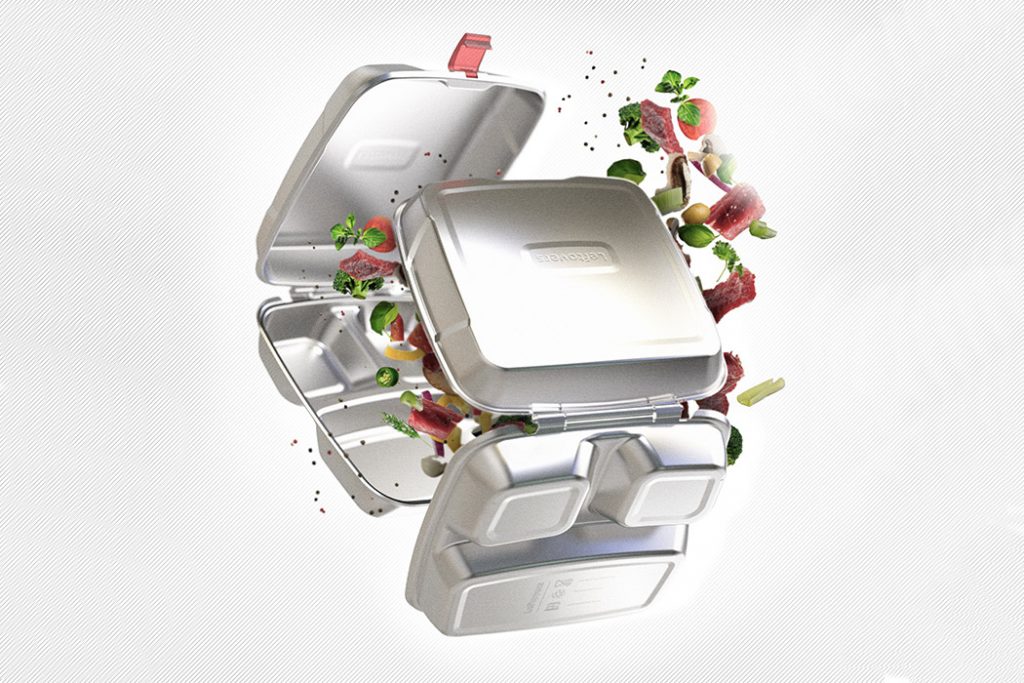
The single-use Styrofoam clamshell takeout box has grown to be a cultural icon of our generation, its widely recognized that transcending continents and languages. However, the prevalent use of Styrofoam and polysterene takeaway containers, which take 500 years to decompose, poses a severe threat to our environment.
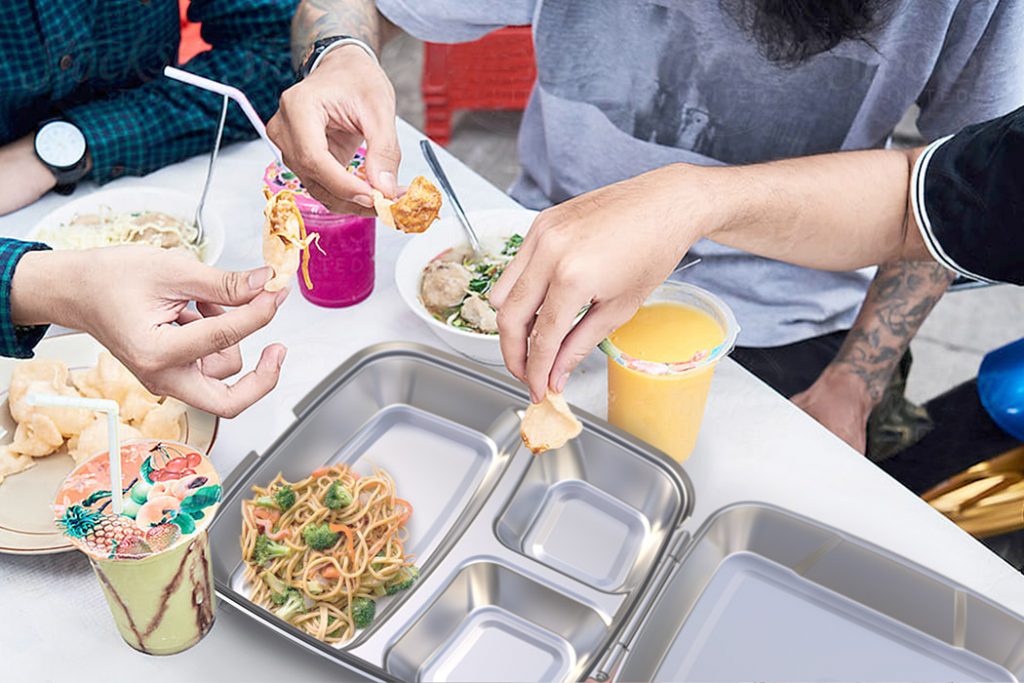
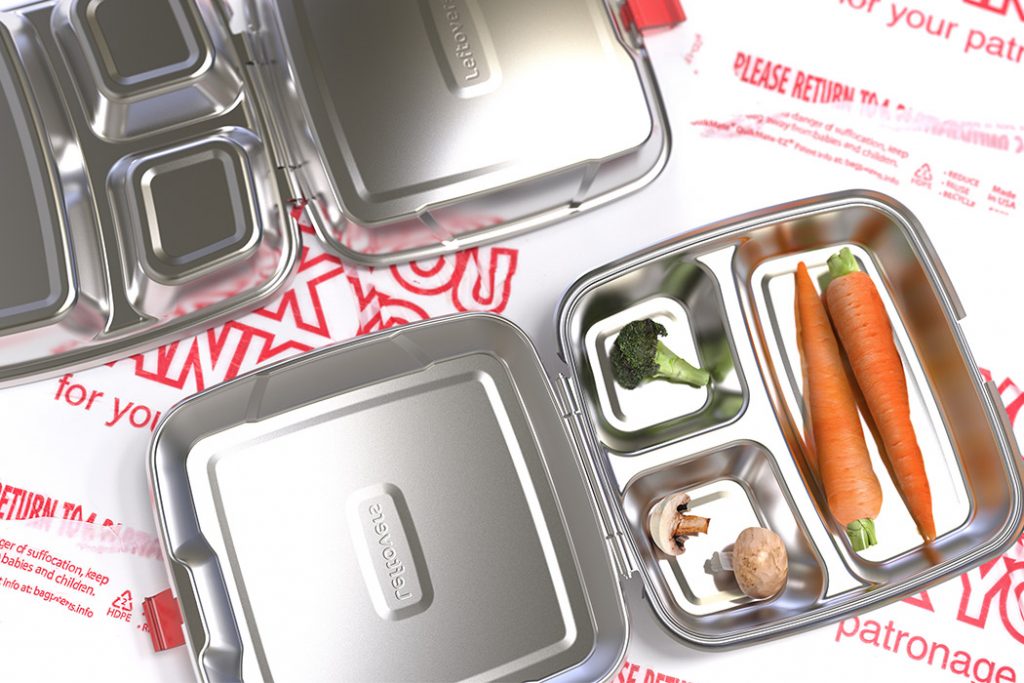
Leftovers by Ross Dungan (also header image)
Designer Ross Dungan addresses this issue with his reusable food container aptly named Leftovers. The redesigned box has a stainless steel body that enhances its functionality, it is dishwasher safe and recyclable.
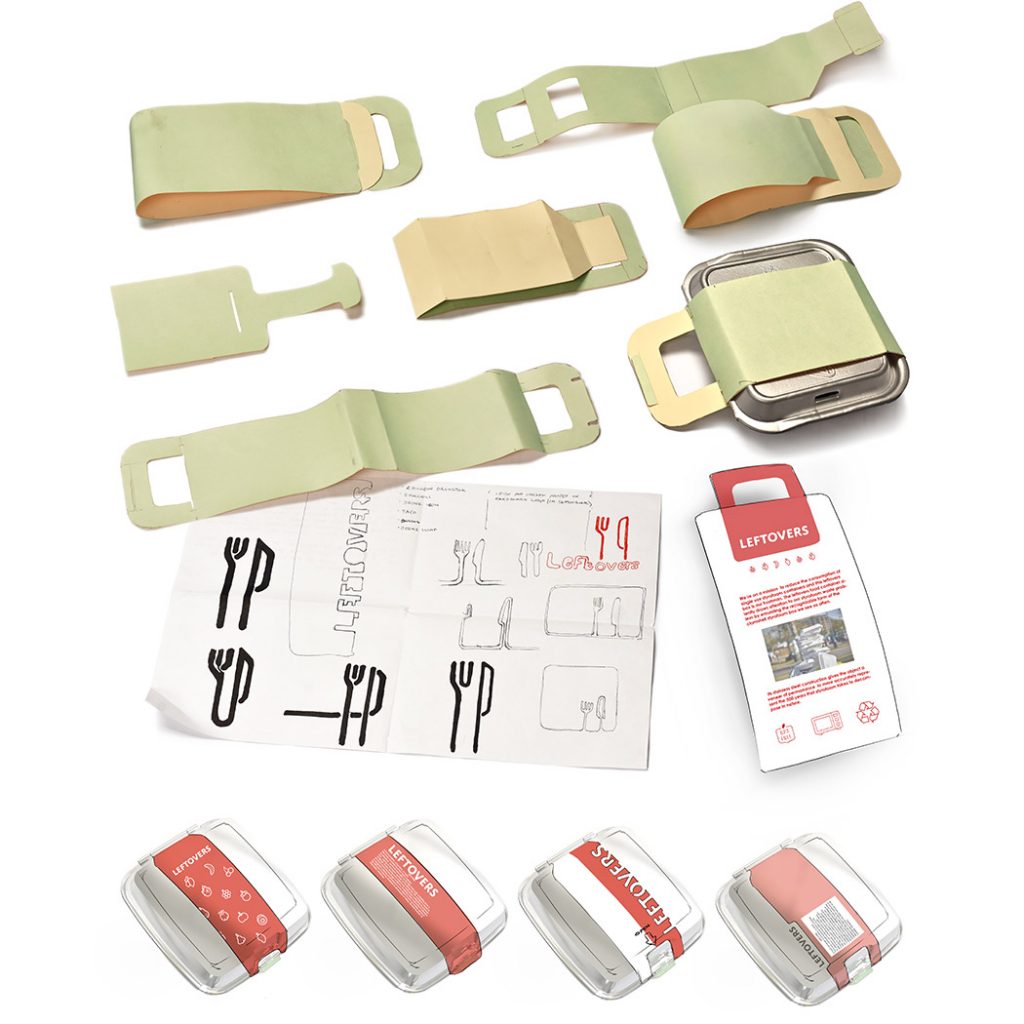
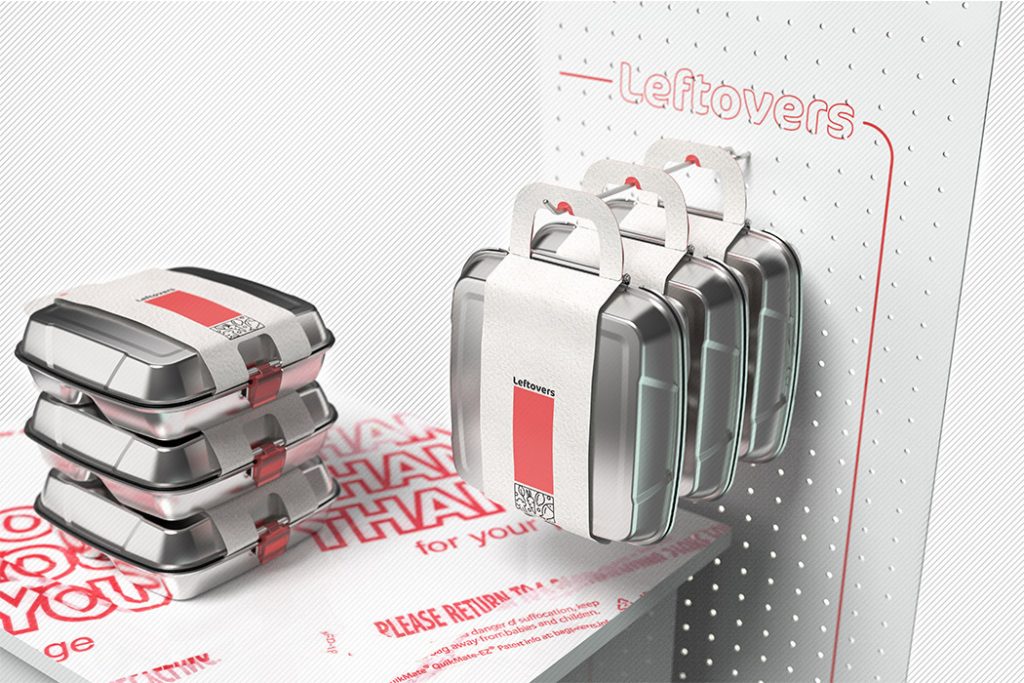
Leftovers by Ross Dungan
The designer hopes that keeping the original design that the general society is used to would make the positive change in behavior and adapting to new habits easier.
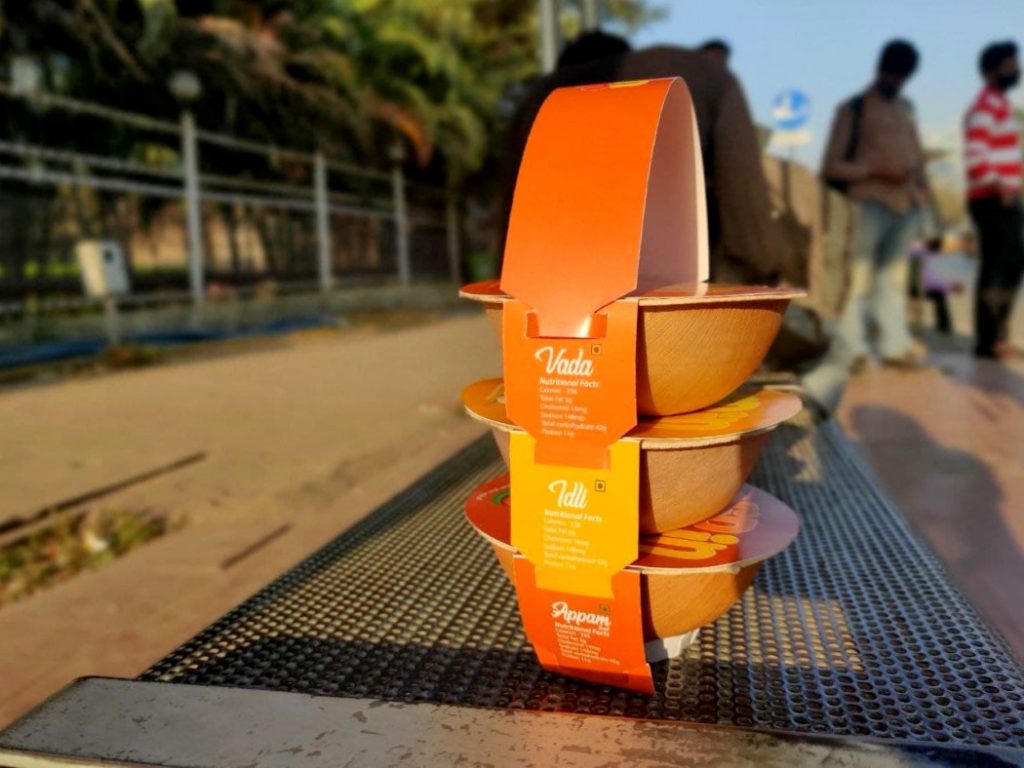
Dip-In Tiffin by Srishti Garg
Designer Srishti Garg has found another clever solution to make takeaway packaging eco-friendly. Inspired by the vertically stackable steel boxes found in Indian tiffins, which are the Indian equivalent of a bento-box, the Dip-In Tiffin modular packaging uses easily available natural materials to store food, making it safer to dispose than plastic.

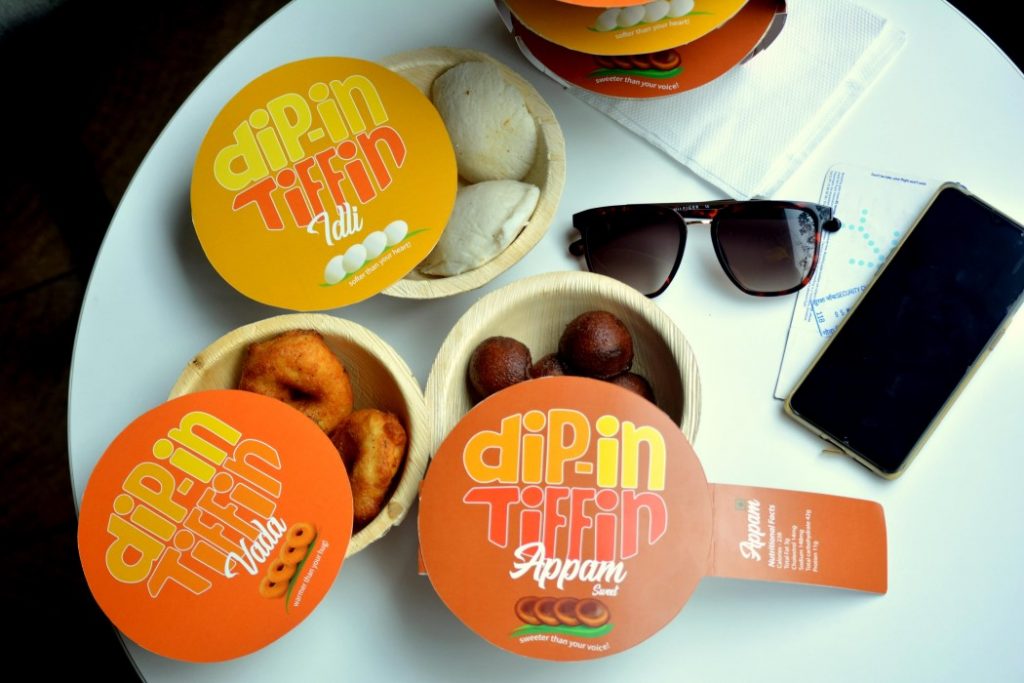
Dip-In Tiffin by Srishti Garg
The tiffin’s main vessel is created using a dried, thermoformed Areca leaf, an eco-friendly alternative to conventional disposable plates and brown paper bags. The material is not air-tight, which limits its use to primarily dry or semi-dry foods, such as doughnutsm sandwiches and fermented rice-cakes.

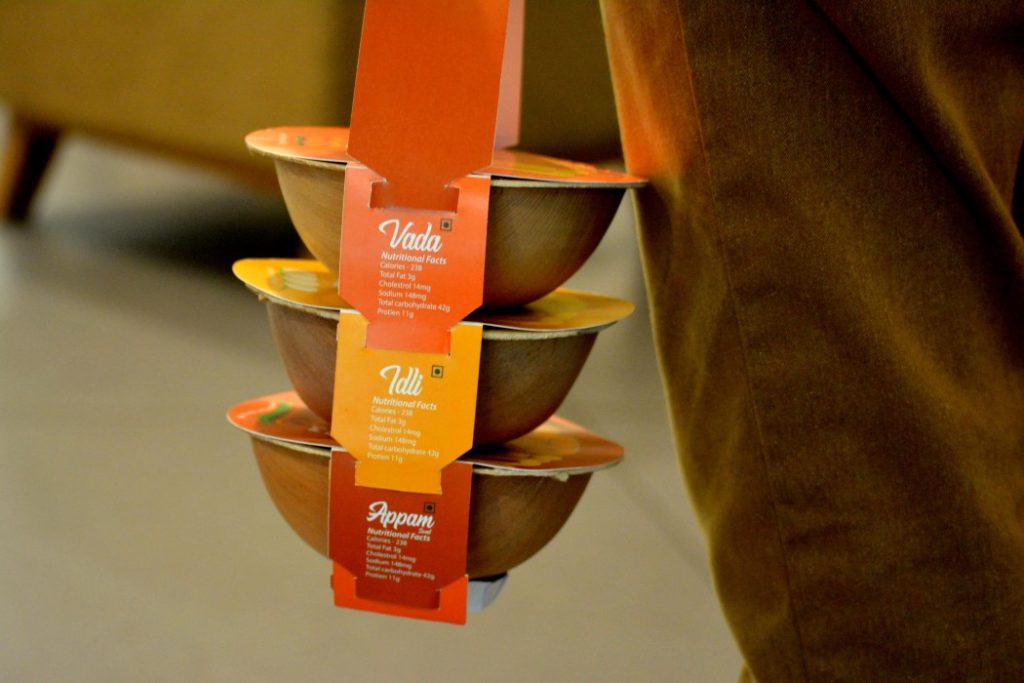
Dip-In Tiffin by Srishti Garg
Several bowls can be slotted along a branded paper sleeve vertically, forming a structure resembling a tiffin. The design does not need any glue, staples or seals, which makes it safer and more sustainable. The designer claims that the solution would be perfect for airports, allowing passengers to quickly grab meals and eat them within hours of checking in.
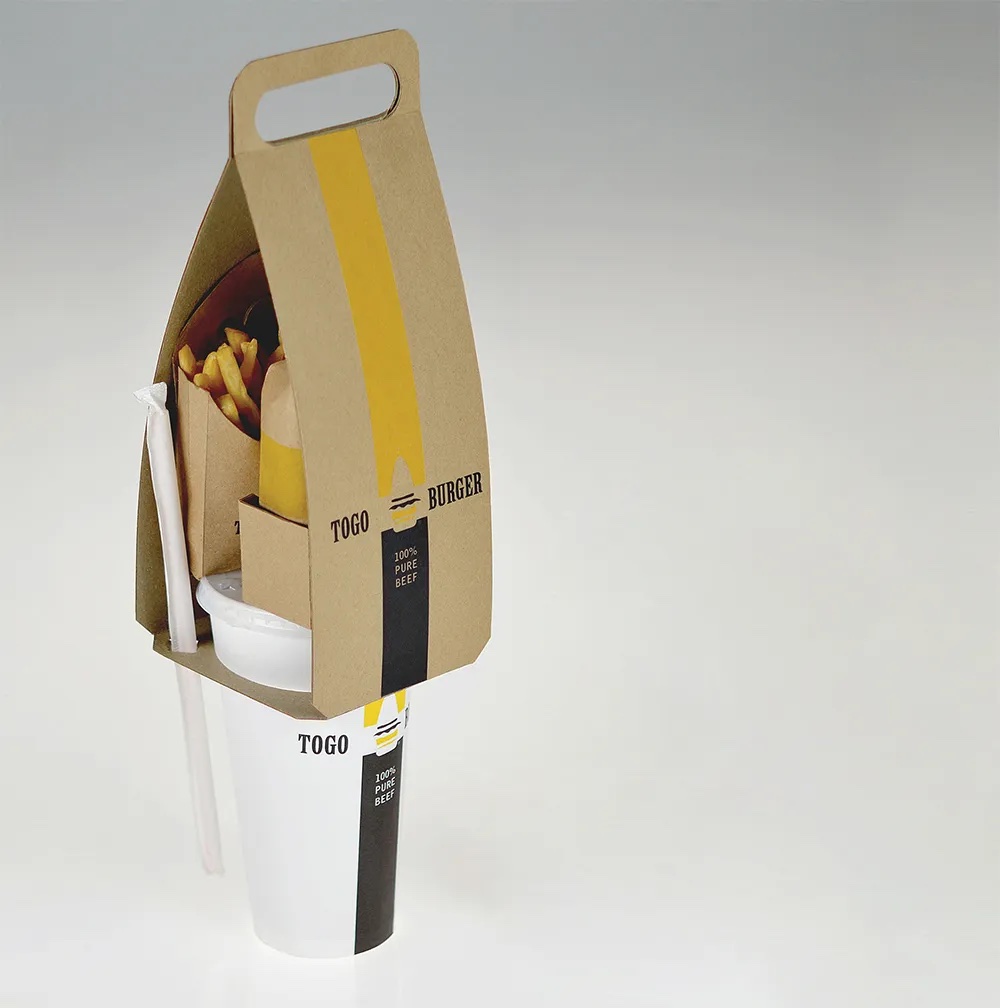
ToGo Burger by Seul Bi Kim
The same idea of using the all-natural makeup for the packaging for it to be easily be disposed of after use has been applied to the ToGoBurger packaging by graduate student at the Rhode Island School of Design Seul Bi Kim. The designer goes even further by devising an efficient fast food packaging concept that is made using a single sheet of paperboard.
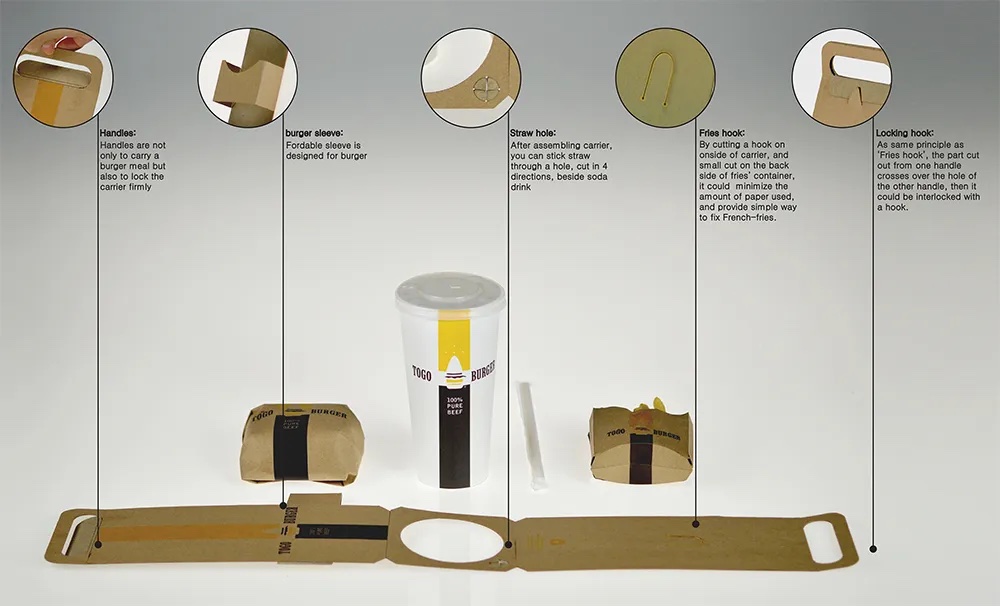
ToGo Burger by Seul Bi Kim
The base element is card stock carrier that has a large circular cutout in the center to hold a drink and a smaller one offset to store a straw. On the left is what can best be described as a burger holster, and the opposite side features a V-shaped cut that acts a hook and mates with french fry packaging to keep it in place. The two sides fold up and a cleverly engineered closure mechanism creates a convenient handle. Adhesive is used sparingly and the entire design leverages gravity and clever hooks engineered entirely from paper for its structure.
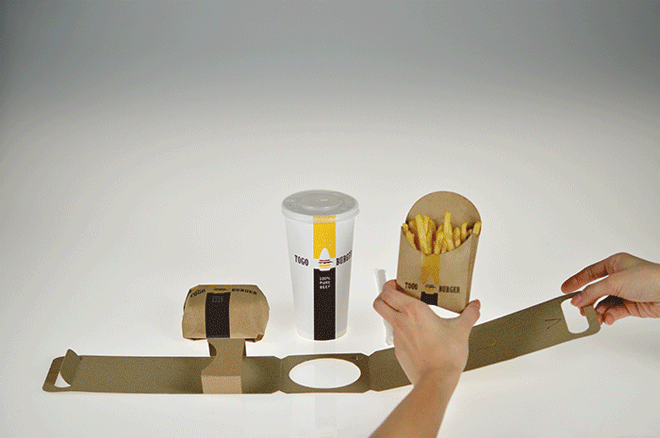
ToGo Burger by Seul Bi Kim
Kim consulted with a packaging manufacturer during the process to ensure that the design can be produced using common techniques and would be cost-effective in mass production.